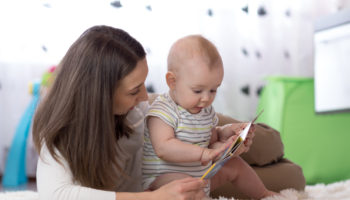By Erin DelRegno
Attachment can be defined as the emotional bond that forms between a child and their parent and primary caregiver. Relationships like these are an important aspect of everyone’s life, and children start to build these relationships from birth. A healthy or secure attachment develops gradually over time and impacts how children build relationships in the future. They help children develop a source of comfort, security, trust, and enables them to learn social & emotional skills.
The following are attributes children may show in regards to whether, or not, they have developed secure attachments with others:
| Child has developed an insecure attachment | Child has developed a secure attachment |
|
|
So, what can you do to support building these relationships with the children you care for?
Teachers of infants and toddlers work with children during a critical period of development, and many times most of their day is spent with you. Children are dependent upon caregivers for their needs. They need to feel safe and experience positive responses to build trust and form relationships. Infants look to you to help calm and soothe them. They cannot do this themselves. To older children, you are their source of safety and connection. The following are some strategies to use when working with children to help develop and build these healthy relationships:
1.Fewer transitions. Children can’t form secure attachments if adults in their lives move in and out too often. It takes time for a primary caregiver to learn the cues of children, and they need to know and understand their care provider. They need consistent care. There should not be too many adults that work with a child, and they should not be moved to new classrooms every few months.
2. Be observant. You will be able to understand the child’s preferences, how they respond to you and other experiences, and what they are sensitive to. *Remember that all children communicate differently.
3. Be consistent and responsive. Accurately read the infant’s cues (movements, sounds, etc.) and meet their needs. This helps the infant know that you are a trusted person. Even if you can’t respond right away, let them know you can hear them and that you are on your way.
*Remember that sometimes what they are letting you know is that they need a break or a different approach from you.
4. Caregivers must provide more than just routine physical care. Be responsive and playful with the child. Showing warmth and affection demonstrates the love that a child needs to reciprocate.
5. Encourage laughter. People connect when they laugh with each other. This also lets the child know that the environment is safe and fun.
6. Have consistent communication and build relationships with the parents/families. Make sure you share needed information back and forth (how their night went, how they slept, what and how much they ate, etc.). This will help all involved support the child’s development and maintain these important relationships.
7. Take care of yourself. Children make many demands and we always need to be able to respond sensitively and consistently to them. If you are tired or stressed, you must take the time and find ways to recharge.
Don’t forget that the parent relationships with children are the core relationships that support a child’s development. Even though children may spend most of their time with you, parents are still the most influential adults in children’s lives. So, make sure to also share attachment tips with families. Encourage them to read to their children, to listen to them so they feel heard, urge them to spend time each day playing with their child, and point out the positive reactions from their child (smiling at them, eye contact, etc.) so they feel how important they are to the child.
“The level of cooperation parents get from their children is usually equal to the level of connection children feel with their parents.” Pam Leo
References:
Creating Healthy Relationships with the Infants in Your Care
Fostering Attachment in the Child Care Setting for Infants and Toddlers
How to Build a Secure Attachment Bond With You Baby



